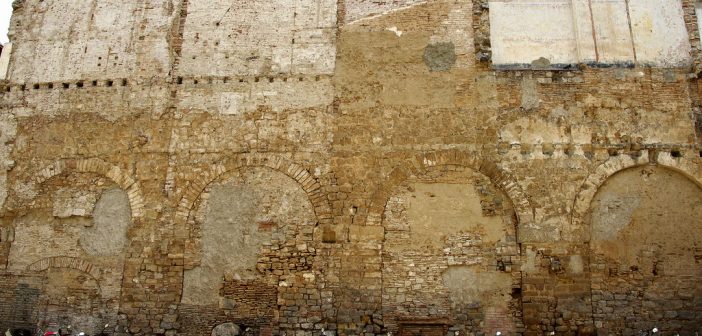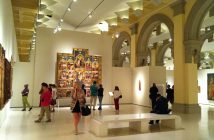Barcelona is a city rich in culture, where you can visit some of the most interesting periods in time: the prehistoric era, the ancient past, the mediaeval years, etc… There is so much to see and discover you will need more than a week just to see even half of the places! Although all the bygone eras are important in their own special way, there is no doubt that Roman Barcelona was one of the most incredible eras here in the Catalan Capital.
The city of Barcelona was founded more than 2000 years ago by the Emperor Augustus around the year 10 A.C under the name “Iulia Augusta Faventia Paterna Barcino” colony, or “Barcino,” for short. The Romans favoured the area’s natural protection from outside attacks provided by the surrounding Litoral mountain range. Within this space, Barcino was created, and at the small Mons Taber hill which faces the sea, the Roman Forum was built. Although there are not many visible remains of Roman Barcelona left today, you can still visit and explore many of the important areas of the Roman city: easy to find, if you know where to look…
We’ve created a short tour of some of the most important sites in Roman Barcelona, those that you simply don’t want to miss: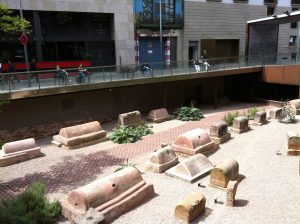
- The burial site at La Plaza de la Vila de Madrid: In this square, you can find an ancient Roman street that would have been in the outskirts of Barcino, as well as Roman tombs on both sides from the 1st-3rd century A.D. The Romans were forbidden to bury their dead inside the city for hygiene reasons, so tombs were instead located on roads into the city.
- Arches from the city’s aqueduct: See the old arches that would have served Barcino’s aqueduct, the city’s main water source.
- Gateway to the city and aqueduct: These remains are located in Plaza Nova, at the top of Calle del Obispo. The gateway can still be identified by the round towers around it that also remain. On the left side of the left tower, a reconstruction of the aqueduct created in 1958 simulates this vital water source.
- House of the Archdeacon: On the ground floor of this building, which currently functions as the historical archive of the city, you can see a part of the wall of Roman Barcelona and the finishing point of the aqueduct.
- Decumanus maximus: The original route passes through the current Calle del Obispo and was one of the two main avenues that divided Roman Barcelona from east to west.
- Temple of Emperor Augustus: Located in the current courtyard of the Centre Excursionista de Catalunya, Catalonia’s central hiking information point, is the oldest building preserved from Barcino. There are just four columns remaining in the Emperor’s temple.
- Roman Forum: The economic powerhouse and central point of Roman Barcelona. It is here where the most important temples of the city were built, yet is also one of most unknown areas of Roman Barcelona. Don’t miss the four columns located at the front of the Palau de la Generalitat de Catalunya, made up of granite from the region of Troy that is more than 2000 years old.
- Cardo Maximus: The other main avenue of Barcino can be found in today’s Baixada de la llibreria” and divided the city from north to south.
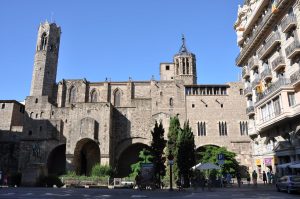
- Defensive wall and towers: Located in Plaza Ramon Berenguer is part of the city’s second wall that dates back to the 4th century A.D. When it was first built, the wall was 16 metres high and had a total of 74 towers. If you look closely, you will also be able to see the remains of recycled materials from other buildings.
- Domus de Avinyó: This Roman house is located on Calle Aninyó, just next to the old wall. It dates back to the 1st century A.D, and belonged to a very important member of Roman Barcelona. Today, you can visit the house and discover its beautiful conservation of paintings, and stunning designs on the ceiling and walls.
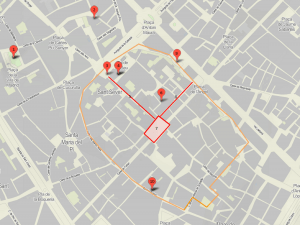
If you still want to discover even more of Roman Barcelona, don’t forget to visit the Museum of Barcelona History. You can find the museum in Plaza del Rey and inside there are many Roman remains, including the archaeological site of Barcino itself.
Are you ready to travel back in time to Barcelona 2000 years ago? Start the adventure now!

